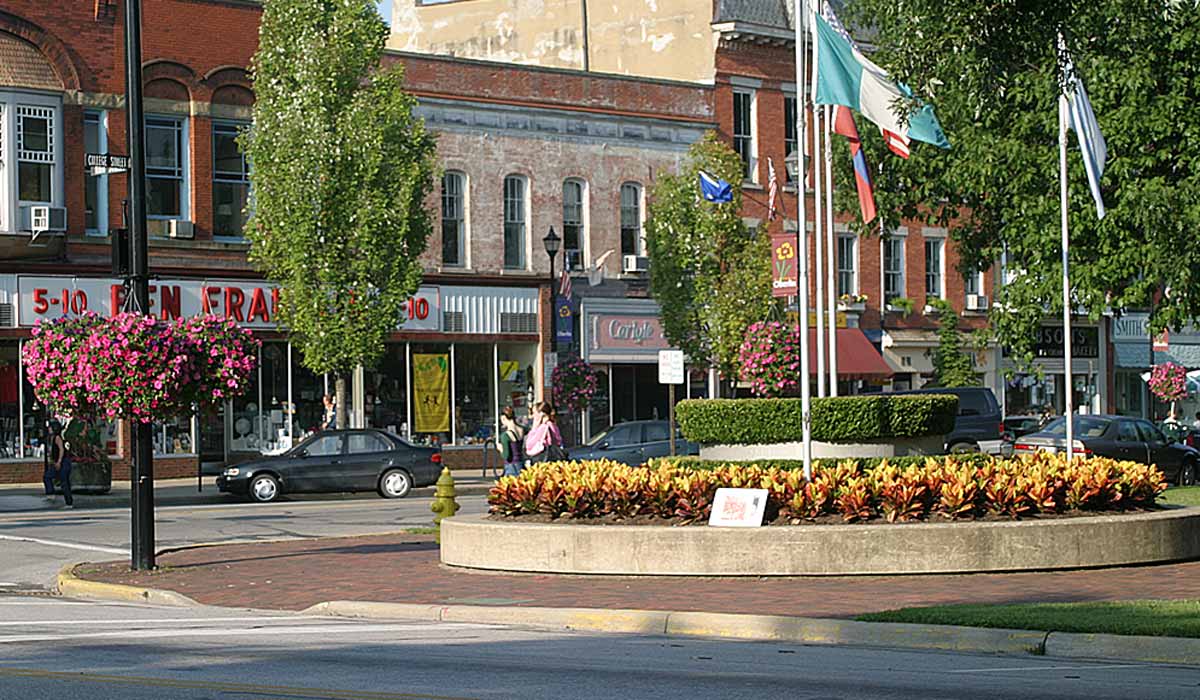Is Local Food Energy Efficient?
- Hits: 5881
- 0 Comments
- Subscribe to updates
- Bookmark
Food is energy. Not much thought is given to it, but every time that we eat, our bodies convert food calories into a fuel that powers everything that we do, from typing at a computer, making art, walking or biking into town, fixing a house, or digging a garden bed.
Over the past 10,000 years, humans have developed agriculture -- the cultivation of land and active management of crops and animals to increase the food-calories available for growing human populations.
The productivity of agriculture is often measured by how many calories of food one farmer can produce through their daily labor. Selective plant breeding, harnessing of energy and technology, and the development of artificial fertilizers allowed a farmer to turn the oatmeal, ham, or eggs that they had for breakfast into an enormous yield of food. The industrial revolution and availability of cheap fossil-fuel energy, allowed for more people to be fed by fewer and fewer farmers.
While impressive, the foundation of this model, cheap oil and a stable climate, are unraveling. Fossil fuel is limited and we already see a correlation between rising energy prices and increasing food prices. Additionally, fossil energy transfers carbon from deep within the ground into the atmosphere, leading to increased atmospheric warming and destabilization of the climate. It is no accident that 10,000 years of relative climatic stability produced the conditions favorable to the emergence of agriculture.
As early as the 1990???s, David Pimentel with the University of Cornell noted that our modern industrial food system requires 10 calories of energy to produce 1 calorie of food. Farm production consumes about 1/3 of these calories, mostly embodied in the chemical fertilizers and other manufactured inputs that require large amounts of energy to produce. However, the remaining 2/3 of these calories are spent processing, preserving, refrigerating, packaging, and transporting food an average of 1,500-2,500 miles to reach us.
This energy trail produces a corresponding carbon trail. According to the International Panel on Climate Change, agriculture emits around 13.5% of the carbon in the atmosphere. When you consider the whole food chain from farm to plate, almost 1/3 of global carbon emissions can be traced back to food, its production, processing, transport, consumption, and waste.
The Oberlin Project is a collaborative effort to help the City of Oberlin and Oberlin College to meet their goals of climate neutrality. The development of local food systems is an important part of the picture. Luckily, there is a strong history of food localization to build on. In 1990, the Oberlin Student Cooperative Association (OSCA), a student-run dining and housing organization, initiated a local food purchasing program. Since that first local food initiative, OSCA, the college???s dining services, and local restaurants like the Black River Caf?? and Agave collectively circulate more than $1 million in the local economy by purchasing local foods.
How can the average Oberlinian get in on the local foods scene? The Oberlin Farmers Market, open on Saturdays from 9am ??? 1pm in front of the Oberlin Public Library, offers a wide-range of locally grown foods. The season opens this Saturday, May 19th. The Oberlin Public Library will also be hosting a screening of the documentary For the Love of Food, which profiles Oberlin???s local food efforts at noon and 1:30 on May 19th.
City Fresh (cityfresh.org), an initiative operated by the New Agrarian Center, is another way to buy local produce. Participants can purchase weekly shares of produce that are conveniently delivered in Oberlin. This year, the City Fresh distribution will take place at the Christ Episcopal Church on Thursday afternoons. Now is the time to sign up for your share!
You can also grow your own food -- either in pots, in your yard, or through Zion CDC???s community garden. It???s hard to beat sitting down to a meal that includes things you grew yourself.
Food plays a fundamental role in the life of our community, affecting the health of our bodies, encouraging social interaction around meals, and impacting our economy. As just one small town, Oberlin spends more than $17 million each year on food. Imagine if most of that money remained in our community! We can leverage this annual spending to reduce our collective consumption of fossil fuel while also increasing community interactions and growing our local economy. That???s a good deal for everyone.










Leave your comment